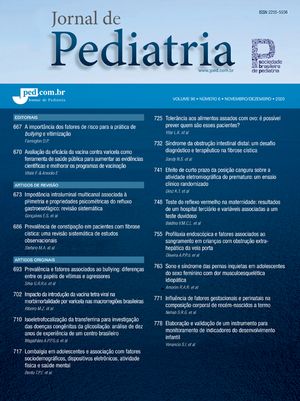
To assess the use of noninvasive ventilation (NIV) in children and its application in the acute and chronic setting of pediatric respiratory failure.
SourcesSearch of pertinent articles within Pubmed, Cochrane and Ovid MEDLINE databases from 1950 to 2007, using the keywords pediatrics, noninvasive ventilation and positive airway pressure.
Summary of the findingsThere is a paucity of published data on pediatric NIV. The majority of the data available are case reports or small case series, with a number of small, randomized studies reported.
ConclusionAlthough the use of NIV is increasingly recognized in pediatrics, there are currently still no generally accepted guidelines for its use. In the chronic setting, its use has mainly been proven in obstructive sleep apnea and respiratory failure secondary to neuromuscular disorders. It would appear that the major challenge is ensuring compliance, and this can be enforced by patient/caregiver education, use of a suitable interface, heated humidifiers and by minimizing the side effects of NIV. In the setting of acute respiratory failure, it would appear from available data that success is usually predicted by the rapidity of response. Patients placed on NIV should be monitored closely and this mode of ventilation should be reviewed if there is a lack of response within a few hours after commencement of therapy.
Avaliar o uso de ventilação não-invasiva (VNI) em crianças e sua aplicação na insuficiência respiratória aguda e crônica.
Fontes dos dadosBusca de artigos pertinentes no Pubmed, base de dados Cochrane e Ovid MEDLINE entre 1950 e 2007, através do emprego dos termos pediatria, ventilação não-invasiva e pressão positiva nas vias aéreas.
Síntese dos dadosHá uma escassez de publicações acerca da VNI em pediatria. A maioria dos dados disponíveis diz respeito a relatos de caso ou pequenas séries de casos, com apenas alguns estudos randomizados pequenos.
ConclusãoEmbora o uso de VNI seja cada vez mais reconhecido em pediatria, atualmente não existem ainda orientações gerais para o seu uso. Nos casos crônicos, seu uso foi eficaz no tratamento de apnéia obstrutiva do sono e na insuficiência respiratória secundária a afecções neuromusculares. Parece que o maior desafio é garantir a adesão ao tratamento e isso pode ser obtido através da instrução do paciente/cuidador, utilização de uma interface adequada, umidificadores aquecidos e minimização dos efeitos colaterais da VNI. Nos casos de insuficiência respiratória aguda, os dados disponíveis parecem indicar que se pode inferir o sucesso do tratamento pela rapidez na resposta terapêutica. Os pacientes submetidos à VNI devem ser monitorados cuidadosamente e essa modalidade de ventilação deve ser reconsiderada caso não haja resposta após algumas horas do início do tratamento.








